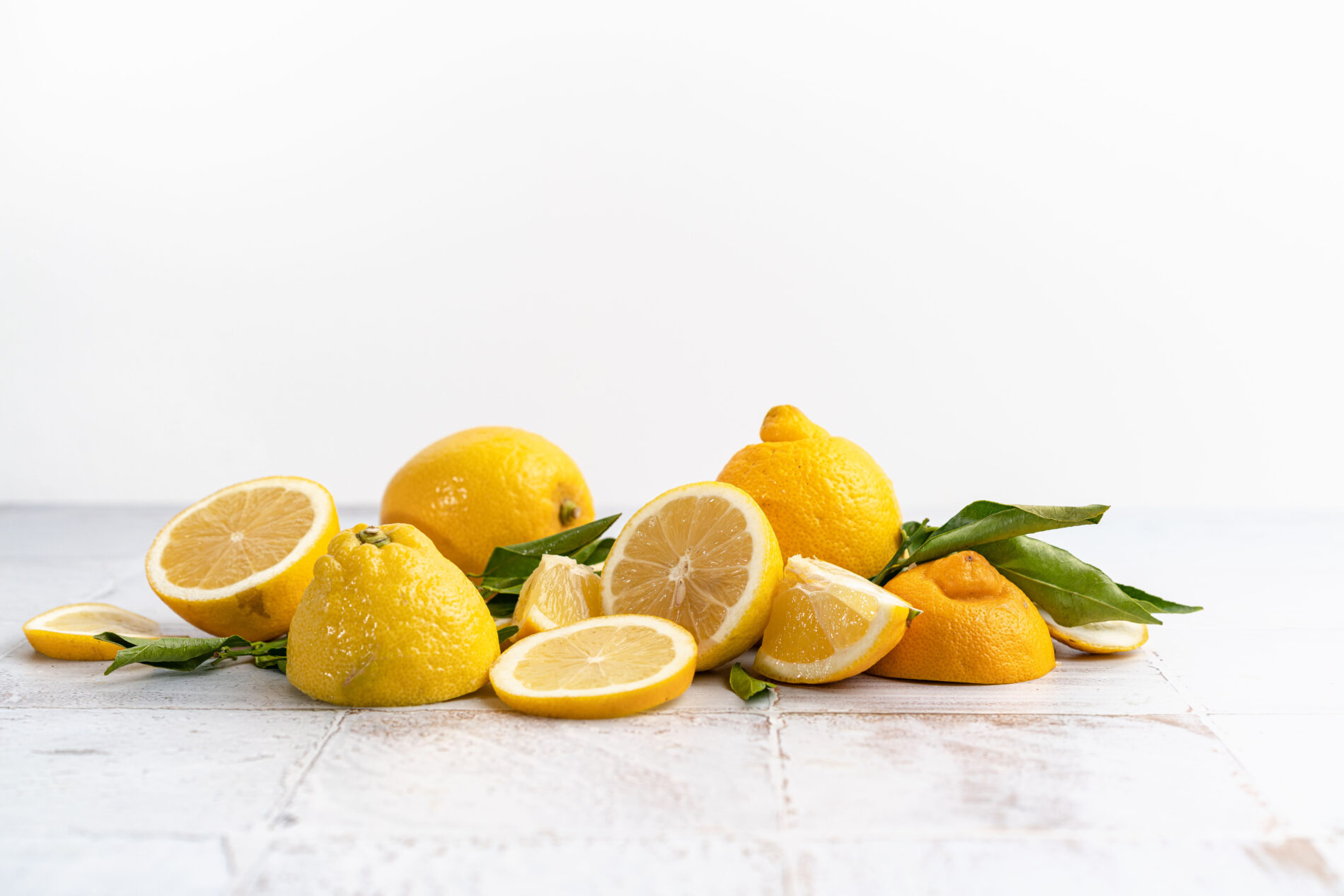Lemon. This bright yellow ellipsoidal fruit is among the most popular in the world and definitely one of the sourest. Its juice has, due to the citric acid, a pH as low as 2.2. And that’s the reason why lemons are so popular among people. Why? Because we simply love sour things.
Really sour
Of course, no one in their right mind would sip a cup of lemon juice (please, do not try this as it might lead to painful consequences in the stomach). But a little bit of tart acidic juice is so refreshing. It cuts through rich and fatty foods and helps bring the freshness and the joy of eating back.
Acidity works wonders in balancing an overly sweet or hot dish. People learned to love sour ingredients and they understood the power of lemon (and other citruses in that matter). That’s why we use it and use it extensively.
All parts of the fruit are useful
The leaves of the tree are used to make tinctures and herbal teas,. They are also added to marinades to transmit the citrusy flavour to a wide variety of meats and seafood.
The rind of a lemon is also a boon for every cook. When peeled, it can be easily dried to use for future recipes, candied and eaten with tea, infused with liquor to boost you during lows. You can zest a lemon to add some flavour to your pasta or pudding or grind some dried peels and infuse salt or sugar with it. Or you can do everything the other way around.
Preserving
Take a look at two almost identical recipes that could help you get well with the citrusy flavour (and to reduce food waste as a bonus). We’ll be preserving lemon peels with salt and sugar. The first method is similar to preserving lemons with salt (classic Moroccan recipe) except that there are no lemons needed. Only peels.
All citrus peels will work well! Collect them all and set aside. Take a jar and fill it with salt about 1 cm deep. Then press the peels into it, covering with more salt. Bury everything under the salt. You can do it at once or keep on collecting and digging the peels.
Time will pass and everything will be tamped down by its own weight. It will make extra space for more peels. When the jar is full, leave it for 3-4 weeks on a counter. By that time the peels will be salted and ready to kick in your dishes with saltines and acidity. Rinse it, thinly slice and use in soups, stews and dressings.
Get to the flavour
The lemon peel is packed with flavour, you just need to know how to get to it. The second recipe shows how to unleash the citrus power. It’s called oleo-saccharum (which means “oil sugar” in Latin). This is a classic ingredient met in bartenders’ guides from the 18th century. It was called ‘ambrosial essence’, which is kind of true.
It’s flavourful, it’s sweet, what else is needed? Oleo-saccharum has always been used in punch-making. It’s basically sugar mixed with the oil released from the lemon peel. It makes it a rather basic ingredient which is also made in no time.
Peel some lemons (or any other citrus), cover the peels with sugar (use 45 g of sugar per 1 lemon) and leave overnight macerating. The result is rich syrup bursting with a citrusy flavour. Strain the peels, leave the liquid and store it in a fridge. Use wisely whenever you need to sweeten something up.











What do you think?